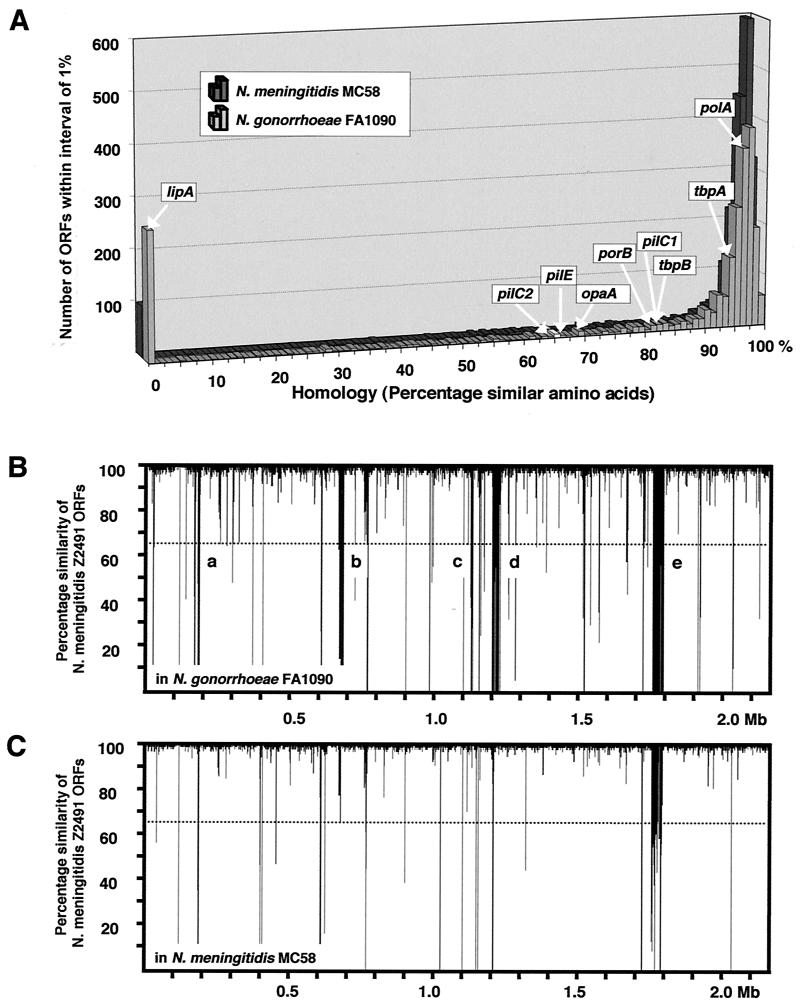FIG. 1.
Computer-assisted comparison of publicly available neisserial genome sequences. (A) TBlastN comparison of ORFs in Z2491 against the genomes of N. gonorrhoeae FA1090 and N. meningitidis MC58. The comparison used a minimum E value of 10−4 as the cutoff for reporting hits, which corresponds to ∼20% amino acid similarity for an ORF of 100 bases and <10% for an ORF of 300 bases or larger. The percentage of homologous amino acids in a Z2491 ORF (abscissa) is plotted against the number of ORFs (ordinate) presenting that percentage of homology. The positions of selected genes are shown. lipA is a meningococcus-specific capsular biosynthesis gene. PolA is a DNA polymerase involved in chromosome replication. The protein PilC1 is an adhesin, PilE is the pilin subunit, and OpaA and PorB are surface antigens. TbpA and TbpB are the membrane transport and surface-exposed components, respectively, of a human transferrin binding and iron acquisition system. Hence, proteins known experimentally to have similar functions but varying sequences in strains of pathogenic neisseriae are found to have between 65 and 80% amino acid similarity and allow a choice of 65% homology as a cutoff to define the presence or absence of a functional homologue in a test strain. (B) Chromosomal distribution of genetic differences. The degree of homology of the N. meningitidis Z2491 ORFs to sequences in the FA1090 genome (percentage amino acid similarity of predicted proteins) is plotted along the length of the Z2491 chromosome. The larger islands of strain-specific DNA are as follows: a, part of the capsule locus NMA0184-NMA0185 and NMA0195-NMA0202; b, two-partner secretion family proteins NMA0687-NMA0698; c and d, phage-related proteins NMA1183-NMA1200 and NMA1298-NMA1324; and e, prophage NMA1820-NMA1883. (C) Chromosomal distribution of differences between N. meningitidis Z2491 and MC58. The homology of ORFs to sequences in the MC58 genome is plotted along the length of the Z2491 chromosome. Note that many of these differences correspond to those between Z2491 and N. gonorrhoeae FA1090 and are hence strain and not species specific.

